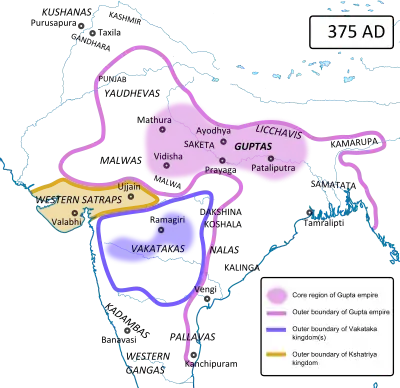Chandravarman
Chandravarman (4th century CE) was a king of the Pushkarana kingdom in the Bankura district of West Bengal.[1][2] The kingdom was established shortly before the advent of the Gupta Empire, and was located to the west of the Samatata kingdom of eastern Bengal.[1]

Chandravarman was the son of king Simhavarmana. He extended his kingdom to the east towards the Faridpur district.[1]
According to the inscription on the Allahabad pillar by Gupta emperor Samudragupta, Chandravarman was defeated by Samudragupta and the area became a part of the Gupta Empire:[1]
"(L. 21.)- (Samudragupta,) who abounded in majesty that had been increased by violently exterminating Rudradeva, Matila, Nāgadatta, Chandravarman, Ganapatināga, Nāgasena, Achyutanandin, Balavarman, and many other kings of (the land of) Āryāvarta; -who made all the kings of the "forest countries" to become (his) servants."
Alternatively, the Chandravarman named in the inscription could be a ruler named on an inscription found in Mandsaur in Malwa.[2]
The defeat of Chandravarman paved the way to Gupta suzerainty over Bengal.[1]